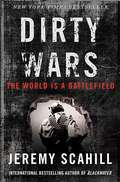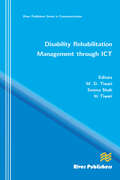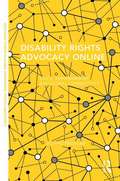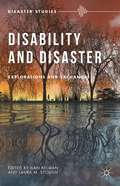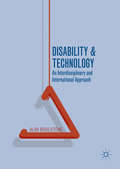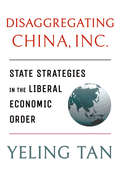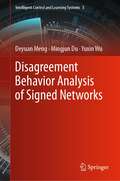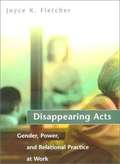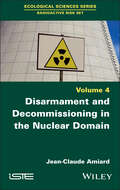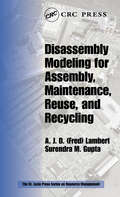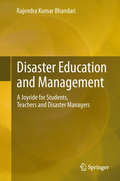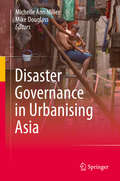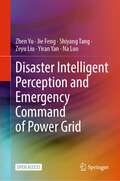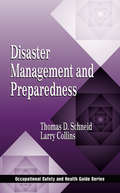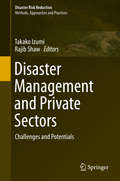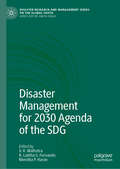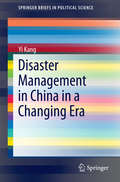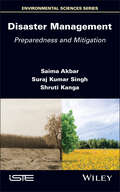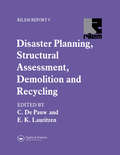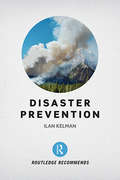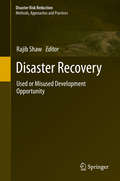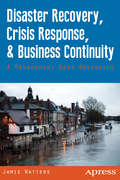- Table View
- List View
Dirty Wars: The World is a Battlefield
by Jeremy ScahillIn Dirty Wars, Jeremy Scahill, author of the New York Times best-seller Blackwater, takes us inside America’s new covert wars. The foot soldiers in these battles operate globally and inside the United States with orders from the White House to do whatever is necessary to hunt down, capture or kill individuals designated by the president as enemies. Drawn from the ranks of the Navy SEALs, Delta Force, former Blackwater and other private security contractors, the CIA’s Special Activities Division and the Joint Special Operations Command ( JSOC), these elite soldiers operate worldwide, with thousands of secret commandos working in more than one hundred countries. Funded through “black budgets,” Special Operations Forces conduct missions in denied areas, engage in targeted killings, snatch and grab individuals and direct drone, AC-130 and cruise missile strikes. While the Bush administration deployed these ghost militias, President Barack Obama has expanded their operations and given them new scope and legitimacy. Dirty Wars follows the consequences of the declaration that “the world is a battlefield,” as Scahill uncovers the most important foreign policy story of our time. From Afghanistan to Yemen, Somalia and beyond, Scahill reports from the frontlines in this high-stakes investigation and explores the depths of America’s global killing machine. He goes beneath the surface of these covert wars, conducted in the shadows, outside the range of the press, without effective congressional oversight or public debate. And, based on unprecedented access, Scahill tells the chilling story of an American citizen marked for assassination by his own government. As US leaders draw the country deeper into conflicts across the globe, setting the world stage for enormous destabilization and blowback, Americans are not only at greater risk—we are changing as a nation. Scahill unmasks the shadow warriors who prosecute these secret wars and puts a human face on the casualties of unaccountable violence that is now official policy: victims of night raids, secret prisons, cruise missile attacks and drone strikes, and whole classes of people branded as “suspected militants.” Through his brave reporting, Scahill exposes the true nature of the dirty wars the United States government struggles to keep hidden.
Dirty Water: One Man’s Fight to Clean Up One of the World’s Most Polluted Bays
by Bill SharpsteenDirty Water is the riveting story of how Howard Bennett, a Los Angeles schoolteacher with a gift for outrageous rhetoric, fought pollution in Santa Monica Bay--and won.
Disability Rehabilitation Management Through ICT
by M. D. Tiwari Iti Tiwari Seema ShahThis is the fifth publication under the IIIT-A Series on e-Governance. It is a collection of 20 articles based on the presentations made in the Seminars. This book will of interest to all stakeholders in the disability rehabilitation management as the population of people with disabilities in growing.
Disability Rights Advocacy Online: Voice, Empowerment and Global Connectivity (Routledge Studies in Global Information, Politics and Society)
by Filippo TrevisanDisability rights advocates in the United Kingdom and the United States recently embraced new media technologies in unexpected and innovative ways. This book sheds light on this process of renewal and asks whether the digitalisation of disability rights advocacy can help re-configure political participation into a more inclusive experience for disabled Internet users, enhancing their stakes in democratic citizenship.
Disability and Disaster
by Ilan Kelman Laura M. StoughDisability and Disaster adds disaster research to the expanding area of disability studies. This edited collection includes writings by international scholars and first-hand narratives from individuals with disabilities, or knowing people with disabilities, affected by disaster. In this collection, the editors, Laura M. Stough and Ilan Kelman, have embraced the call from the disability community to write "nothing about us without us," while incorporating reflections from scholars studying why certain groups are more vulnerable to disasters than others. In these first-hand narratives, authors with disabilities do not label themselves as "victims" of disaster or of disability. Rather, they portray agency and self-reliance. As such, these narratives present a counter-narrative to the assumed vulnerability and weaknesses of individuals with disabilities.
Disability and Technology
by Alan RoulstoneThis book brings together formally disparate literatures and debates on disability and technology in a way that captures the complex interplay between the two. Drawing on disability studies, technology studies and clinical studies, the book argues that interdisciplinary insights together provide a more nuanced and less stylized picture of the benefits and barriers in disability and technology. Drawing on a breadth of empirical studies from across the globe, a picture emerges of the complex and multi-directional interplay of technology and disability. Technology is neither inherently enabling or disabling but fundamentally shaped by the social dynamics that shape their design, use and impact.
Disaggregating China, Inc.: State Strategies in the Liberal Economic Order (Cornell Studies in Political Economy)
by Yeling TanSet in the aftermath of China's entry into the World Trade Organization, Disaggregating China, Inc. questions the extent to which the liberal internationalist promise of membership has been fulfilled in China. Yeling Tan unpacks the policies that various Chinese government actors adopted in response to WTO rules and shows that rather than disciplining the state, WTO entry provoked a divergence of policy responses across different parts of the complex party-state. Tan argues that these responses draw from three competing strategies of economic governance: market-substituting (directive), market-shaping (developmental), and market-enhancing (regulatory). She uses innovative web-scraping techniques to assemble an original dataset of over 43,000 Chinese industry regulations, identifying policies associated with each strategy. Combining textual analysis with industry data, in-depth case studies, and field interviews with industry representatives and government officials, Tan demonstrates that different Chinese state actors adopted different logics of adjustment to respond to the common shock of WTO accession. This policy divergence originated from a combination of international and domestic forces.Disaggregating China, Inc. breaks open the black box of the Chinese state, explaining why WTO rules, usually thought to commit states to international norms, instead provoked responses that the architects of those rules neither expected nor wanted.
Disagreement Behavior Analysis of Signed Networks (Intelligent Control and Learning Systems #5)
by Deyuan Meng Mingjun Du Yuxin WuThis book investigates the disagreement behavior analysis problems for signed networks in the presence of both cooperative and antagonistic interactions among agents. Owing to the existing antagonistic interactions, signed networks exhibit a variety of disagreement behaviors subject to different topology conditions, especially in comparison with commonly considered unsigned networks involving only cooperative interactions among agents. Since signed networks are generally adopted to describe the dynamics of some practical network systems, they have attracted much attention in many areas, such as biology, sociology, economics, and politics. By focusing on agents with the first-order linear dynamics, the book establishes the systematic behavior analysis frameworks for signed networks, under which diverse disagreement behaviors have been disclosed, including both convergence and fluctuation behaviors, regardless of static or dynamic network topologies. In particular, a class of dynamic signed networks has been introduced, together with the associated dynamic distributed controller design and disagreement behavior analysis of agents. This book is intended for undergraduate and graduate students, engineers, and researchers who are interested in control of network systems, multi-agent systems, social networks, and so on.
Disappearing Acts: Gender, Power, and Relational Practice at Work
by Joyce K. FletcherChosen as a finalist in the George R. Terry Book Award presented by the Academy of Management for outstanding contribution to the advancement of management knowledge. With its move from hierarchical to team-based structures and its dismantling of functional barriers, the organization of the future is touted as a radical departure from traditional models. The worker of the future, we are told, must be a collaborative team player, able to give and receive help, empower others, and operate in a world of interdependence. This new worker needs relational skills and emotional intelligence--the ability to work effectively with others and understand the emotional context in which work takes place. Paradoxically, the very skills that give organizations a competitive advantage may be precisely those that prevent individual employees--especially women--from advancing. In this book Joyce K. Fletcher presents a study of female design engineers that has profound implications for attempts to change organizational culture. Her research shows that emotional intelligence and relational behavior often "get disappeared" in practice, not because they are ineffective but because they are associated with the feminine or softer side of work. Even when they are in line with stated goals, these behaviors are viewed as inappropriate to the workplace because they collide with powerful, gender-linked images of good workers and successful organizations. Fletcher describes how this collision of gender and power "disappears" the very behavior that organizations say they need and undermines the possibility of radical change. She shows why the "female advantage" does not seem to be advantaging females or organizations. Finally, she suggests ways that individuals and organizations can make visible the invisible work--and people--critical to organizational competence and transformation.
Disarmament and Decommissioning in the Nuclear Domain
by Jean-Claude AmiardFollowing the acquisition of the atomic bomb by five states, the United Nations began drafting several treaties to limit nuclear proliferation. These efforts failed, as four more states also acquired nuclear weapons. In a similar vein, an attempt to limit atomic weapons - primarily within the two superpowers - was initiated.While the number of weapons has decreased, the new bombs now being manufactured are more powerful and more precise, negating any reduction in numbers. In the field of civil nuclear use, all nuclear facilities (reactors, factories, etc.) have a limited lifespan. Once a plant is permanently shut down, these facilities must be decommissioned and dismantled.These operations are difficult, time-consuming and costly. In addition, decommissioning generates large volumes of radioactive waste of various categories, including long-lived and high-activity waste. Risks to the environment and to health are not negligible during decommissioning. The International Atomic Energy Agency (IAEA) and the Nuclear Energy Agency (NEA) of the Organisation for Economic Co-operation and Development (OECD) have produced numerous publications with recommendations. Each state has its own decommissioning strategy (immediate or delayed) and final plan for the site - whether it be returning it to greenfield status or obtaining a nuclear site license with centuries-long monitoring.
Disassembly Modeling for Assembly, Maintenance, Reuse and Recycling (Resource Management)
by A.J.D. (Fred) Lambert Surendra M. GuptaIndustry has grown to recognize the value of disassembly processes across a wide range of products. Increasing legislation that may soon require mandatory recycling of many post-consumed goods and a desire to develop more environmentally benign end-of-life processes has fueled research into this concept. Traditionally, disassembly has been viewed a
Disaster Education and Management
by Rajendra Kumar BhandariThe book is expressly written for the young minds because they are our best hope for a safer tomorrow. The book is profusely illustrated, as it offers a joyride to the world of the whole range of hazards through simplified teaching-learning process, with less of teaching and more of learning. This is because most readers would love to learn without actually being taught. The book is designed to take advantage of distilled wisdom of centuries to inspire and enlighten the common man to turn them into prime movers of safer societies. Senior citizens, community leaders, self-trained disaster managers, social workers, media personnel, bureaucrats and those averse to the very thought of reading will also find the book useful as it is illustrative and inviting.
Disaster Governance in Urbanising Asia
by Michelle Ann Miller Mike DouglassThis edited book approaches the threat and impact of environmental disasters on Asia's urban populations from a governance perspective. It adopts a multi-sector and multi-disciplinary approach to disaster governance that emphasises the importance of multiple stakeholders in preparing for, responding to and recovering from disasters and their cascading impacts in Asia's cities. The contributors to this volume take a broad view of the multifaceted causalities and the interconnected threats and vulnerabilities of environmental disasters in urbanising Asia. As such, the book is an invitation to advance scholarship in the search for more effective, comprehensive and inclusive disaster preparedness agendas, recovery programs and development priorities.
Disaster Intelligent Perception and Emergency Command of Power Grid
by Jie Feng Zhen Yu Shiyang Tang Zeyu Liu Yiran Yan Na LuoThis open access book addresses the current technical problems of low efficiency of emergency site information collection, lack of flexibility of emergency information interaction, lack of fusion analysis technology and disaster loss prediction model, and low intelligence of emergency auxiliary decision making. The content contains research on multiple information collection technology of power grid disaster loss, fusion analysis and prediction technology of power grid disaster loss information, and real-time information interaction technology between emergency site and command center in this work. This book illustrates the process of developing a prototype system for grid disaster perception and emergency command, which realizes the functions of grid disaster perception and emergency auxiliary decision-making and visualization command. The prototype intelligent perception and emergency command system for power grid disasters has been piloted in several units. It provided support for disaster loss prediction, disaster damage perception, and emergency command auxiliary decision-making in the earthquake in Sichuan, China, as well as the heavy rainfall in Zhejiang, China and Typhoon No. 9 "Lupi" that registered in Fujian, China, which significantly improved the emergency disposal Work efficiency.
Disaster Management and Preparedness (Occupational Safety & Health Guide Series)
by Larry R. CollinsDetailing methods for preparing organizations for disasters, this book discusses not only tried and true tactics, but also areas often overlooked during the reactive and post-disaster phases. The authors address special considerations important in planning for disaster management, from chemical spills, floods, aircraft crashes, and terrorist attack
Disaster Management and Private Sectors
by Rajib Shaw Takako IzumiThis book draws upon case studies and practices of different types of DRR involvement by the private sector from all over the world. The book comprises two parts, Part I: Overview and Regional Cases; and Part II: Country Cases. The regional cases include those from Africa, Asia, Europe, and Central America, and the country cases include ones from India, Japan, the United States, Vietnam, Thailand, Bangladesh, Malaysia, and Nepal. DRR at the international level is discussed from the perspective of the United Nations International Strategy for Disaster Reduction (UNISDR). The perspective of the Asia-Pacific Economic Cooperation (APEC) is presented in the discussion of DRR at the societal level. The private sector is becoming more active in disaster management and plays an important role in distributing relief items and sending search and rescue teams in the response phase. However, once the response stage is over, private sector involvement tends to fade. While a number of disaster risk reduction (DRR) initiatives by the private sector are documented, they remain limited. The private sector can contribute enormously to DRR by developing business continuity plans, innovating technology for early warning systems, and providing and sharing technical knowledge, skills, and resources in the field of disaster preparedness. To strengthen DRR capacity, it is crucial to involve the private sector as major actors in DRR. The primary target groups for this book are students and researchers in the fields of disaster management and DRR studies. Another target group comprises practitioners and policy makers, who will be able to apply the collective knowledge from this work to policy and decision making. The book provides an overview of the current research trends and furnishes basic knowledge on this important topic.
Disaster Management for 2030 Agenda of the SDG (Disaster Research and Management Series on the Global South)
by R. Lalitha S. Fernando Nivedita P. Haran V. K. MalhotraThis book shows how specifically each goal of Sustainable Development Goals could be incorporated in country wise developmental programmes set to transform the world. It highlights how a combination of initiatives on mitigation of disasters and a robust progress could build a resilient society. The book discusses multidimensional processes such as administrative, financial and social challenges which can mitigate disasters and help in an advancement towards SDG Goals. It highlights the embeddedness of SDGs in disaster mitigation as they tend to be linked and interdependent. By linking sustainable development to disaster mitigation one gets a strong justification for investment into preparedness as a guarantee or insurance against loss and damages due to unforeseen disasters.
Disaster Management in China in a Changing Era
by Yi KangThis book shows how Chinese officials have responded to popular and international pressure, while at the same time seeking to preserve their own careers, in the context of disaster management. Using the 2008 Wenchuan earthquake as a case study, it illustrates how authoritarian regimes are creating new governance mechanisms in response to the changing global environment and what challenges they are confronted with in the process. The book examines both the immediate and long-term effects of a major disaster on China's policy, institutions, and governing practices, and seeks to explain which factors lead to hasty and poorly conceived reconstruction efforts, which in turn reproduce the very same conditions of vulnerability or expose communities to new risks. In short, it tells a "political" story of how intra-governmental interactions, state-society relations, and international engagement can shape the processes and outcomes of recovery and reconstruction.
Disaster Management: Preparedness and Mitigation
by Shruti Kanga Suraj Kumar Singh Saima AkbarDisaster Management embarks on a comprehensive exploration of proactive approaches to confronting the ever-growing challenges posed by natural and man-made disasters. Drawing on a wealth of interdisciplinary research and practical expertise, this book delves into the core principles of disaster management, offering a roadmap for communities, governments and organizations to enhance their preparedness and mitigation strategies. From risk assessment and early warning systems, to community engagement and infrastructure resilience, each chapter provides actionable insights and case studies that illuminate the path towards building robust resilience frameworks. With a keen focus on adaptability and innovation, this book equips readers with the tools necessary to navigate the complexities of today’s dynamic world, fostering a culture of preparedness that can mitigate the impact of disasters and safeguard lives and livelihoods.
Disaster Planning and Control
by William M. KramerIn this new book, Bill Kramer examines the complexities of disaster planning and control, covering the concepts of disaster management, development of disaster and emergency operation plans, and much more. Through examples and case studies, the book is designed to allow the fire officer to study how the fire service has been involved with responding to various disasters and, by learning from the past and understanding the concepts presented, make a difference in the overall outcome of future events.
Disaster Planning, Structural Assessment, Demolition and Recycling: Report Of Task Force 2 Of Rilem Technical Committee 121-drg, Guidelines For Demolition And Reuse Of Concrete And Masonry
by E.K. Lauritzen C. de PauwThis book contains general recommendations for site clearing after man-made and natural disasters. It provides guidelines on the demolition of damaged structures and the reuse of demolition and construction materials. It has been prepared by an international task force originating from cooperation between RILEM and UNESCO.
Disaster Prevention (Routledge Recommends)
by Kelman IlanLeading editors have curated collections of important Routledge research in ebook form to share recommended paths to understanding cutting-edge topics. In this book Ilan Kelman presents his guide to the must-read research on the subject of Disaster Prevention.
Disaster Recovery
by Rajib ShawThis book explains key lessons learned from diverse disaster situations and analyzes them within the framework of governance, education, and technology, providing a framework for disaster recovery as a development opportunity. In post-disaster situations, different types of resources are put into the affected region, varying according to technical, financial, intellectual, and community resources. If properly implemented, disaster recovery can change the context of risk-reduction approaches; if not, it can create additional hazards. In some countries, the post-disaster recovery process has even changed the socio-economic and political context of the affected region and country. The book has 21 chapters and is divided into four parts: governance and institutional issues (five chapters), education and learning issues (four chapters), technology and innovation issues (five chapters), and cross-cutting issues (five chapters). The final chapter provides an analysis of the key topics. The primary target groups for this book are students and researchers in the fields of environment, disaster risk reduction, and climate change studies. The book provides them with a good idea of the current research trends in the field and furnishes basic knowledge about these vital topics. Another target group comprises practitioners and policy makers, who will be able to apply the knowledge collected here to policy and decision making.
Disaster Recovery, Crisis Response, and Business Continuity
by Jamie WattersYou''re in charge of IT, facilities, or core operations for your organization when a hurricane or a fast-moving wildfire hits. What do you do? Simple. You follow your business continuity/disaster recovery plan. If you''ve prepared in advance, your operation or your company can continue to conduct business while competitors stumble and fall. Even if your building goes up in smoke, or the power is out for ten days, or cyber warriors cripple your IT systems, you know you will survive. But only if you have a plan. You don''t have one? Then Disaster Recovery, Crisis Response, and Business Continuity: A Management Desk Reference, which explains the principles of business continuity and disaster recovery in plain English, might be the most important book you''ll read in years. Business continuity is a necessity for all businesses as emerging regulations, best practices, and customer expectations force organizations to develop and put into place business continuity plans, resilience features, incident-management processes, and recovery strategies. In larger organizations, responsibility for business continuity falls to specialist practitioners dedicated to continuity and the related disciplines of crisis management and IT service continuity. In smaller or less mature organizations, it can fall to almost anyone to prepare contingency plans, ensure that the critical infrastructure and systems are protected, and give the organization the greatest chance to survive events that can--and do--bankrupt businesses. A practical how-to guide, this book explains exactly what you need to do to set up and run a successful business continuity program. Written by an experienced consultant with 25 years industry experience in disaster recovery and business continuity, it contains tools and techniques to make business continuity, crisis management, and IT service continuity much easier. If you need to prepare plans and test and maintain them, then this book is written for you. You will learn: How to complete a business impact assessment. How to write plans that are easy to implement in a disaster. How to test so that you know your plans will work. How to make sure that your suppliers won''t fail you in a disaster. How to meet customer, audit, and regulatory expectations. Disaster Recovery, Crisis Response, and Business Continuity: A Management Desk Reference will provide the tools, techniques, and templates that will make your life easier, give you peace of mind, and turn you into a local hero when disaster strikes. What you''ll learn All the concepts comprising business continuity, IT service continuity, data recovery, and crisis management How to set up and run an end-to-end business continuity program for your organization How to write business continuity policies and governance documents How to test your business continuity plans, system DR, data center DR, and crisis management processes How to avoid almost all the common traps that both beginners and experienced practitioners fall into How to keep your IT system up and running in the face of disaster Who this book is for Business continuity managers and analysts, emergency planners, disaster recovery managers, service continuity managers and analysts, IT project and operations managers, IT availability managers, auditors, facilities managers, heads of IT, risk analysts and managers, site managers, office managers, governance professionals, and C-level managers. Table of Contents Introduction Part One: Introduction to Business Continuity and Disaster Recovery 1. An Overview of Business Continuity Management (BCM) 2. Essentials of BCM Part Two: Plan for Business Continuity and Disaster Recovery 3. Get Started on Your Plan: First Things First 4. Prepare the Plan 5. Write a IT Disaster Recovery Plan 6. Write a Business Process Recovery Plan 7. Manage Supply Chain Continuity 8. Select and Manage Continuity Suppliers 9. Educate the Workforce 10. Provide Governance and Reporting Part Three: Test and Maintain Your Continuity and Recovery Plans 11. Testi...
Disaster Resilience
by Disasters Committee on Increasing National Resilience to HazardsNo person or place is immune from disasters or disaster-related losses. Infectious disease outbreaks, acts of terrorism, social unrest, or financial disasters in addition to natural hazards can all lead to large-scale consequences for the nation and its communities. Communities and the nation thus face difficult fiscal, social, cultural, and environmental choices about the best ways to ensure basic security and quality of life against hazards, deliberate attacks, and disasters. Beyond the unquantifiable costs of injury and loss of life from disasters, statistics for 2011 alone indicate economic damages from natural disasters in the United States exceeded $55 billion, with 14 events costing more than a billion dollars in damages each. One way to reduce the impacts of disasters on the nation and its communities is to invest in enhancing resilience--the ability to prepare and plan for, absorb, recover from and more successfully adapt to adverse events. "Disaster Resilience: A National Imperative" addresses the broad issue of increasing the nation's resilience to disasters. This book defines "national resilience," describes the state of knowledge about resilience to hazards and disasters, and frames the main issues related to increasing resilience in the United States. It also provide goals, baseline conditions, or performance metrics for national resilience and outlines additional information, data, gaps, and/or obstacles that need to be addressed to increase the nation's resilience to disasters. Additionally, the book's authoring committee makes recommendations about the necessary approaches to elevate national resilience to disasters in the United States. Enhanced resilience allows better anticipation of disasters and better planning to reduce disaster losses-rather than waiting for an event to occur and paying for it afterward. "Disaster Resilience" confronts the topic of how to increase the nation's resilience to disasters through a vision of the characteristics of a resilient nation in the year 2030. Increasing disaster resilience is an imperative that requires the collective will of the nation and its communities. Although disasters will continue to occur, actions that move the nation from reactive approaches to disasters to a proactive stance where communities actively engage in enhancing resilience will reduce many of the broad societal and economic burdens that disasters can cause.
